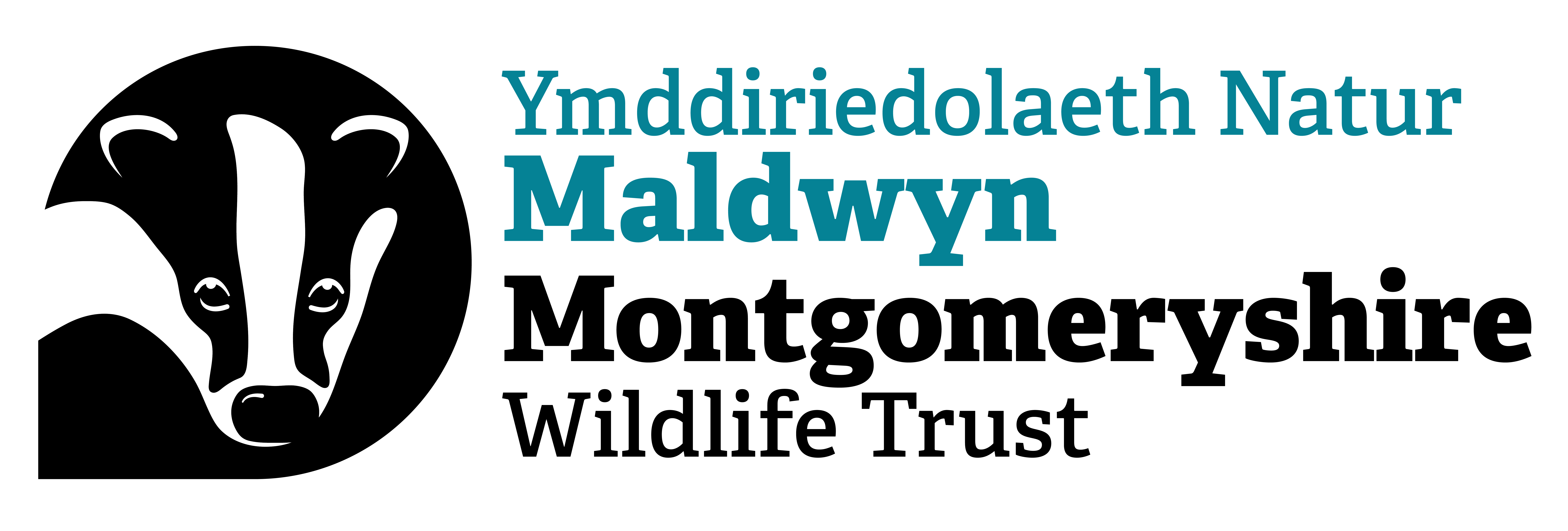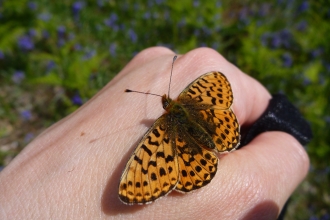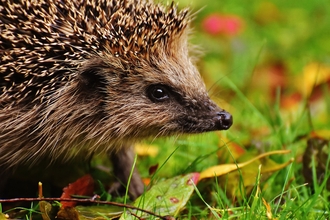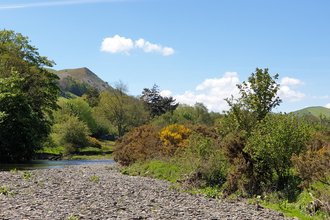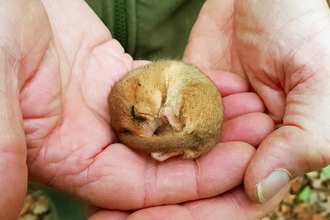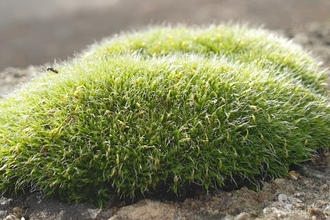We tend to think of mature woodland being a continuous cover of high canopy trees, but thousands of years ago mainland Britain was subject to the activity of herds of wild animals - cattle, deer, horses and pigs – which grazed and browsed, and rooted around in the soil. The wild woods of old were incredibly diverse places, with trees of different ages standing above a patchwork of scrub and open grassed and wetland areas. Think of a habitat and it would have been represented in some form.

Waterbuck at sunrise in misty flooded woodland © Martin Harvey
Our modern woodlands are a far cry from this. Even those areas we call ancient woodland were largely all felled between the 16th and 18th centuries for shipbuilding. A single large warship required 2,000 to 3,000 mature oak trees! For a time after this, humans actively worked our woodlands to gather materials for building, firewood and charcoal, as well as grazing for our livestock. This mimicked the actions of the animals which, by then, we had pushed to extinction.
Widespread traditional woodland management practices began to decline during the 19th and 20th centuries due to industrialisation, agricultural expansion and the development of new materials which replaced these wood products. There was also a shift towards plantation forestry for timber. In 1905, there were around 230,000 hectares of actively managed coppice woodland in the UK; by 2003, this had dropped by nearly 95% to just 12,767 hectares (Source: Forestry Commission’s ‘Forestry Facts & Figures 2003’).

Volunteer coppicing at Pwll Penarth Nature Reserve © MWT
Why is lack of management a problem?
After the last ice age, our woodlands spent thousands of years developing a natural balance with the activity described above. Myriad wild animals, plants and fungi evolved to take advantage of all the different niches. The landscape was constantly changing, but it was well-connected, meaning there were always new opportunities.
By removing large areas of woodland and then abandoning any management in those woodlands which remain, we have created very few opportunities for all this once-abundant wildlife. We are all familiar with the narrative of widespread declines in nature and this is part of the picture.
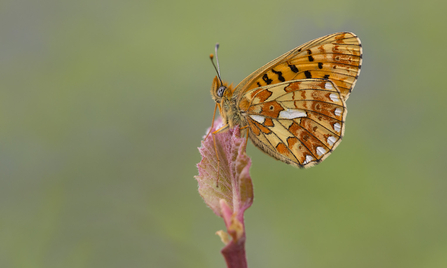
Pearl-bordered Fritillary butterfly © Bob Eade
The Pearl-bordered Fritillary
There may be no better example of this issue than the Pearl-bordered Fritillary (PBF). Our supporters will know very well that this is now a very rare species in Wales, and that Montgomeryshire is the last remaining stronghold. By modern standards, we think of the PBF as extremely fussy; MWT has struggled to keep the species here for over 20 years. However, it is simply a case of their natural environment changing beyond recognition for this butterfly.
PBFs need carpets of their caterpillar’s foodplant – Common Dog-violet – along with a light litter of dead leaves or bracken. They also need a warm micro-climate and abundant spring flowers to power their flight. They are reluctant to fly far in the open (it makes them more vulnerable to predation and being blown off course) and dense shade is a barrier. With this in mind, it is not hard to imagine why our modern landscape makes it so hard for them to survive.
©Philip Precey
Woodland wildlife
Managed and grazed woodlands can be bursting with wildlife, from the impossibly cute Hazel Dormouse to the vibrant green Wood Warbler. Reptiles such as Common Lizard and Slow-worm bask in the sunlit patches and hunt the abundant spiders, slugs and insects; Silver-washed Fritillary butterflies whizz up and down the rides and sunny glades, restlessly searching for a mate, occasionally landing on a thistle flower to recharge; and the soil, plants and air are filled with the rustle, buzz and hum of many tiny lives.
Woodland plants can be very tolerant of shade; think of the much-celebrated Bluebell, which can form carpets even in dark Beech woodlands. However, for many plants, it is a race for the sun! Wood Anemone can also form carpets, but only where there is sufficient sunlight; they only open their beautiful faces when the sun is shining.
The truth is that our most diverse woodlands are those which are subject to regular management.
How does management do all this?
Woodlands are the climax community in the UK, which means that in the absence of management, most land will ultimately become woodland (it is for this reason that a lot of tree planting is unnecessary). Woodland will also manage itself; given enough time, natural processes will create diversity through tree fall and natural regeneration. However, our current woodlands are out of balance, are much too young and lack the diversity that results from grazing, browsing and rooting animals.
There can be resistance to cutting trees and shrubs in our nature-depleted world, but most species are very resilient, which is hardly surprising when you think of the environment they evolved to survive in! Coppicing or pollarding simulates browsing and most trees quickly throw up new growth. A coppiced area becomes a sunny glade, abundant with growth of wildflowers; along with fresh, lush growth from the trees, this is a warm all-you-can-eat buffet for insects, which, in turn feed other animals.
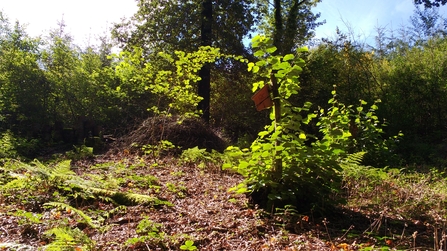
A coppiced area at Coed Pendugwm the following summer
Over the next few years, the tree growth and natural regeneration quickly fills this gap, but regular, rotational woodland management means there are always opportunities at different stages of regrowth.
On our woodland nature reserves, this is exactly what we are trying to achieve. With our teams of volunteers, the coppicing, pollarding, pruning and thinning work creates species-rich edge habitat all over the wood. The majority of the cut branches and logs are piled into habitat piles or used to create dead hedges. The former creates yet another habitat opportunity for creatures and fungi which love deadwood. The latter also helps to protect ground-nesting birds. Some of this important work, as well as follow-up surveys, has been carried out thanks to the support of players of the People’s Postcode Lottery.
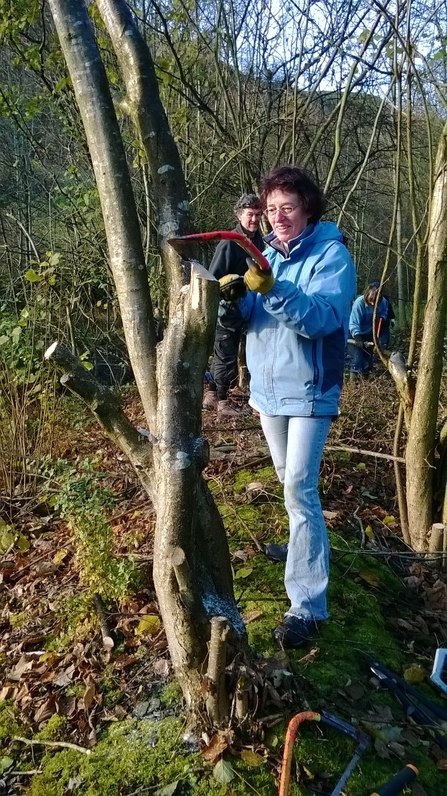
A volunteer pollarding a young tree at Roundton Hill
That’s not to say that making use of wood products is a bad thing. We are becoming increasingly aware of our impact on our environment leading to a growing demand for natural products. A carefully managed woodland can produce sustainable timber, firewood and materials for the practice of traditional skills and crafting. Sustainable wood harvesting activities can be a great way to fund much-needed woodland management for the long-term.
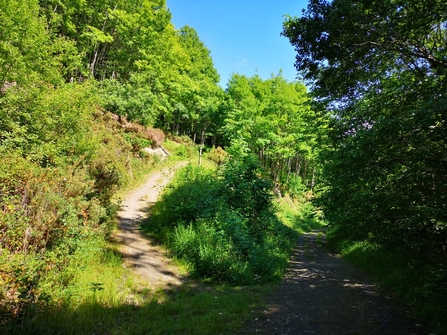
Fantastic edge habitat bathed in sunshine at Dolforwyn Woods
Roots of recovery
Our woodlands are living archives of natural and cultural history—shaped first by wild animals, then by people, and now, too often, by neglect. The loss of traditional management has left many of our woodlands dark, uniform, and relatively silent, no longer the vibrant, shifting mosaics they once were. But this story is not one of irreversible decline. Through thoughtful, active management—mimicking the natural processes of grazing, browsing, and disturbance—we can breathe life back into these spaces.
Managed woodlands are not just productive—they are alive. In a world where nature is in retreat, managed woodlands offer a hopeful model: one where people and wildlife can thrive together. With care, knowledge, and community effort, we can restore these ancient places—not to what they were, but to what they can be once again.
